Drought can damage soils, reducing yield after the drought breaks. The deterioration in soil condition can have wider economic, social and environmental effects on entire communities. Practices that protect the soil, reduce the impact of erosion or assist recovery to regain the productive capacity of soil, help to manage the effects of drought. Under most climate change scenarios, droughts will become more common in many grazing areas of Australia.
The impact of drought on soils and on productivity and profitability can be mitigated through careful management of soils during drought, immediately following drought and in between droughts by developing more resilient soils. This fact sheet summarises the key messages for farmers for managing soils during and after drought in grazing systems. They should be refined locally for best application.
During drought
- Reduce wind erosion risk by removing stock early and maintaining ground cover levels. Avoid grazing failed crops to maintain as much ground cover as possible.
- Avoid grazing failed crops to maintain as much ground cover as possible.
- Establish permanent stock containment areas for lot feeding during drought. When used strategically, containment areas take the pressure
off land during dry periods or late starts. - Avoid overgrazing native and exotic perennial grass stubs as this will significantly slow regeneration.
- Target investment to protect the most reliable paddocks.
- Consider sowing quick growing crops or annual pastures to provide soil cover and act as a break crop where pasture needs re-establishment.
- Practice no-till or sod seeding techniques for pasture establishment.
Immediately following drought
- Use soil tests to gauge soil nutrient stocks and review fertiliser plans. Pastures use fewer soil nutrients during drought. Rain after drought can create a flush of nitrogen and phosphorus, but erosion can reduce paddock fertility. Soil test to match the fertiliser plan to nutrient availability and crop needs.
- Reduce erosion risk by establishing quick growing cover crops or annual pastures where cover is required to stabilise eroding paddocks.
- Keep stock off paddocks until ground cover is at adequate levels for maximum growth. This level will vary with location and pasture type.
- Use rotational grazing techniques for even grazing pressure and avoiding baring out weak areas.
- Ensure there are enough, suitable placed watering points to reduce the distance that animals have to walk and the energy required to get there, and to reduce the risk of susceptible soils being bared out by excessive traffic.
Building soil resilience
- Adopt practices that increase and retain organic matter in the soil such as retaining crop residues and ameliorating subsoil constraints to encourage root growth, carbon inputs from crop roots, and carbon cycling.
- Identify and treat surface fertility and soil structural limitations.
- Monitor soil acidity and implement a liming program if required.
- Improve pasture growth on sandy soils by reducing water repellence, overcoming hard pans and increasing soil fertility.
- Identify the location and severity of subsoil constraints and consider practices that could address those constraints such as subsoil manuring or modification as appropriate for the location and soil type.
HOW DROUGHT AFFECTS SOIL
Increased soil wetting up requirement
Generally coarse-textured sandy soils have a much lower water holding capacity than finer-textured silts and clays. However, soils with a higher clay content can hold water more tightly in their matrix. So while a greater volume of water can be stored in a clay soil, a higher proportion of this will be unavailable to plants.
Following a drought, soils with a high clay content will require a significant amount of water to wet the soil profile beyond its crop lower limit (wilting point) and provide moisture for seed germination and plant growth.
Increased water repellence
Water repellence (where water ponds on the soil surface instead of infiltrating, or infiltrates very slowly) causes patchy crop establishment and exacerbates erosion risk. Drought makes water repellence worse. Sandy soils are more susceptible to water repellence.
Decreased soil microbiology
Microbial activity in the soil is influenced by the type and amount of substrate (food) available, and by temperature, oxygen and moisture content. During drought, the food source and the ability of microbes to move around the soil in solution is also affected. Lack of water can eventually lead to dehydration of the microbes and they break down. Different types of microbes respond differently to moisture stress. For example, fungi are generally more adapted to hot dry conditions than bacteria. However, soil microbes are quick to re-colonise following dry conditions and populations can bounce back provided soil organic carbon, the food source for soil biota, has not been lost through erosion.
Nitrogen may accumulate
During drought, crops take up less nitrogen, but organic matter continues to slowly mineralise, increasing the pool of plant-available N. After a drought breaks, there is often a strong increase in mineralisation causing a flush of nitrogen. Unused fertiliser can also contribute to increased soil
nitrogen stocks.
Phosphorus may not decline
The type and rate of transformation from fertiliser phosphorus to soil phosphorus and fixation can vary widely because of the number of factors involved. When applied in a drought year, phosphorus can carryover depending on the soil type and whether phosphorus fixation occurs. Poor crop growth or a failed crop during drought will limit phosphorus uptake.
Chemical constraints
Less water in the soil increases the concentration of ions in soil solution so that chemical constraints such as salinity, alkalinity, sodicity and boron toxicity generally increase. Areas of saline topsoils can expand in dry years—evaporation of soil moisture concentrates salts in the surface layers and there is insufficient rain to flush them down the soil profile. These areas typically contract in size in wetter years or where surface cover reduces evaporation.
Increased physical constraints
Compaction and soil strength increase as soils dry out making it harder for roots to penetrate and restricting overall plant growth.
Increased erosion risk
One of the greatest effects that drought has on soils in dryland cropping areas is increased soil erosion. Drought leads to a decline in plant growth and vegetative cover over the soil surface. Diminished plant growth means fewer roots and less organic matter to bind soil particles. As soils dry out, they lose coherence and weight, and readily break down into smaller, lighter, more erodible particles. Sandy soils are more prone to wind erosion.
Wind erosion damages paddocks and surrounding areas. Soil blown off-site causes a range of environmental, economic and social problems. Soil erosion removes nutrients and carbon from the paddock and reduces the volume of soil available to plant roots, ultimately reducing the soil’s productive capacity. Water erosion commonly occurs after a drought breaks, particularly when heavy rain falls on bare ground. The main agents of water erosion are raindrop impact and flowing water and this can damage downstream land, watercourses, roads and other infrastructure.
Long fallow disorder
Drought can deplete arbuscular mycorrhizal fungi (AMF) in the soil. Without AMF, crops can fail to thrive, even when there is enough soil moisture. Plants will struggle to access nutrients, particularly phosphorus and zinc.
SHORT-TERM MANAGEMENT DURING AND AFTER DROUGHT
Rule 1. Maintain soil cover (ground cover)
- It is vital to protect soil from erosion. Soil cover has a major influence on the ability of crops and pastures to rebound following drought.
- Minimum soil cover levels will vary with soil type, slope and erosion susceptibility, but will be at least 50%. Check with local advisors.
- Remove livestock before critical soil cover levels are breached. Either sell, agist or establish a permanent stock containment area, but make
decisions early to protect cover. - Use sod seeding or no-till pasture establishment techniques, leaving trash on the surface.
- On eroding areas, emergency tillage can be used but only on soils able to maintain fist-sized clods following tillage. If sands are drifting, consider applying clay if suitable clay is available (e.g. does not have chemical issues such as elevated boron or salinity). Avoid disturbing sands unless clay delving.
- Rotation grazing when compared with longer set stocked techniques generally results in more even grazing across a paddock and less weak areas vulnerable to erosion.
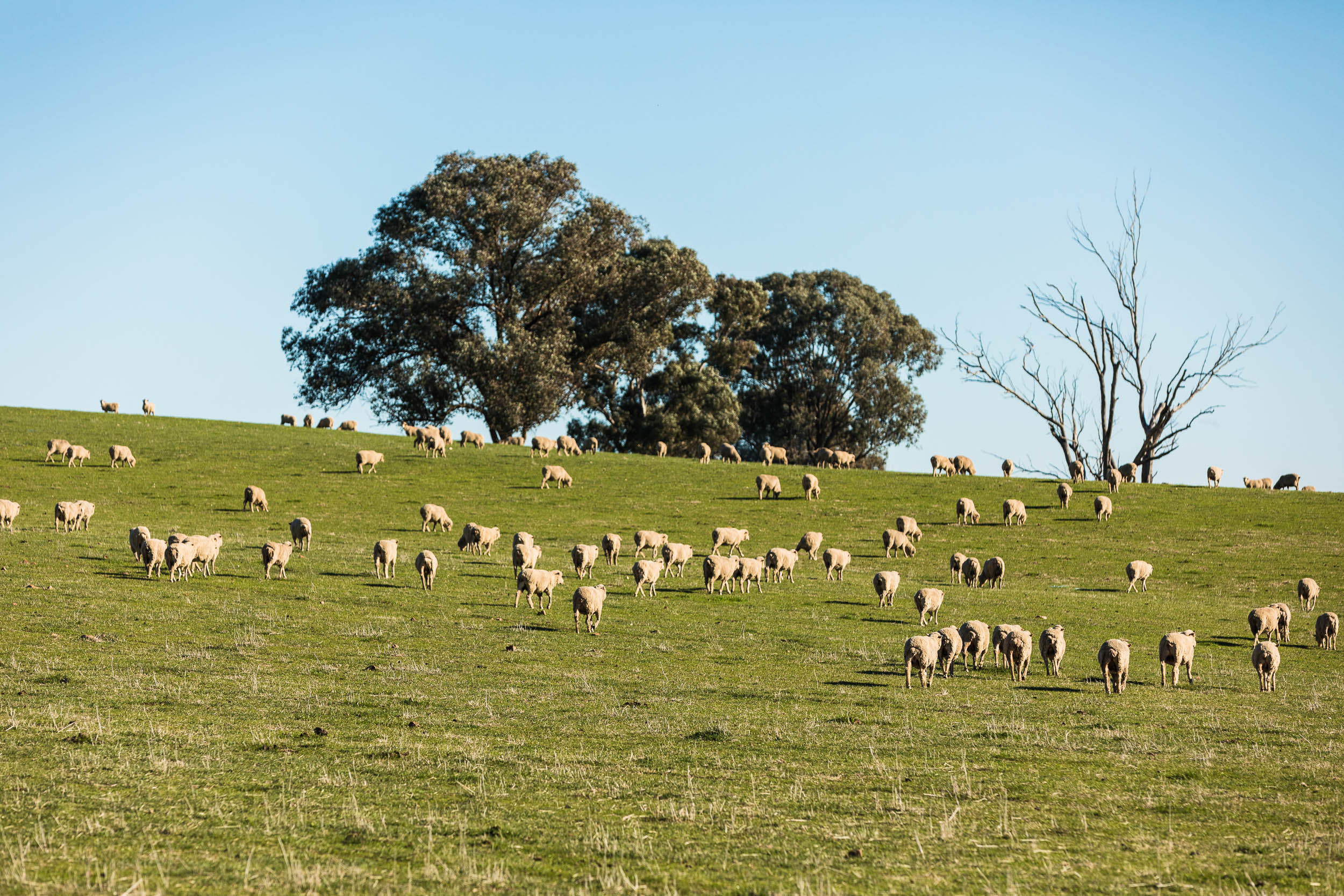
Rule 2. Fine-tune fertiliser management
- Soil test to assess nutrient levels.
- Reduced rates of phosphorus application may be possible after a drought breaks. However, zero phosphorus inputs come with a risk of reduced seedling growth. Highly calcareous soils continue to fix phosphorus during dry weather and these soils may need normal rates.
- Provided there has not been major erosion, soil nitrogen may have increased through continued mineralisation. However, if erosion or overgrazing has depleted soil organic matter, mineralisation may be slow and different forms of nitrogen fertiliser (such as manure) may be necessary to add organic nitrogen back into the soil. Nitrogen fertiliser may be warranted especially if the upcoming pasture has low legume content.
- Consider fertiliser containing phosphorus and zinc if you suspect long fallow disorder. Fertiliser must be placed near the seed.
- Vary fertiliser rates across paddocks and zones as needed.
Rule 3. Pasture and grazing management
- While it is tempting to quickly sow cereal as a cover crop, consider the rotation. Some soil borne diseases (e.g. crown rot) can become more severe after drought while for many others, inoculum levels are lower. If in doubt, test for soil diseases. Use proven crops and varieties rather than experimenting to get cover.
- It is much cheaper and easier to manipulate an existing pasture than re-sow, particularly following a drought. Consider how to improve an existing pasture, for example, with extra fertiliser, weed control etc.)
- When in rotation with cropping, consider the longterm pasture and rotation aims rather than just the short-term needs of the establishing crop. Issues to consider are fertility, weeds, disease carryover and clover or medic seedbank.
- On sandy soils, consider tackling water repellence with wetting agents. Sowing strategies include on-row and edge-row sowing, using winged points instead of knife points, and delaying seeding if the soil is still dry. Disturbing non-wetting soils when they are dry can make repellence worse.
LONGER-TERM PRACTICES TO BUILD SOIL RESILIENCE
Soils that are more resilient to drought have a greater capacity to capture and store moisture, enabling crop roots to penetrate deeper and increasing biological activity and nutrient supply to plants. This leads to increased biomass production above and below ground which in turn will provide more surface cover and increased yields.
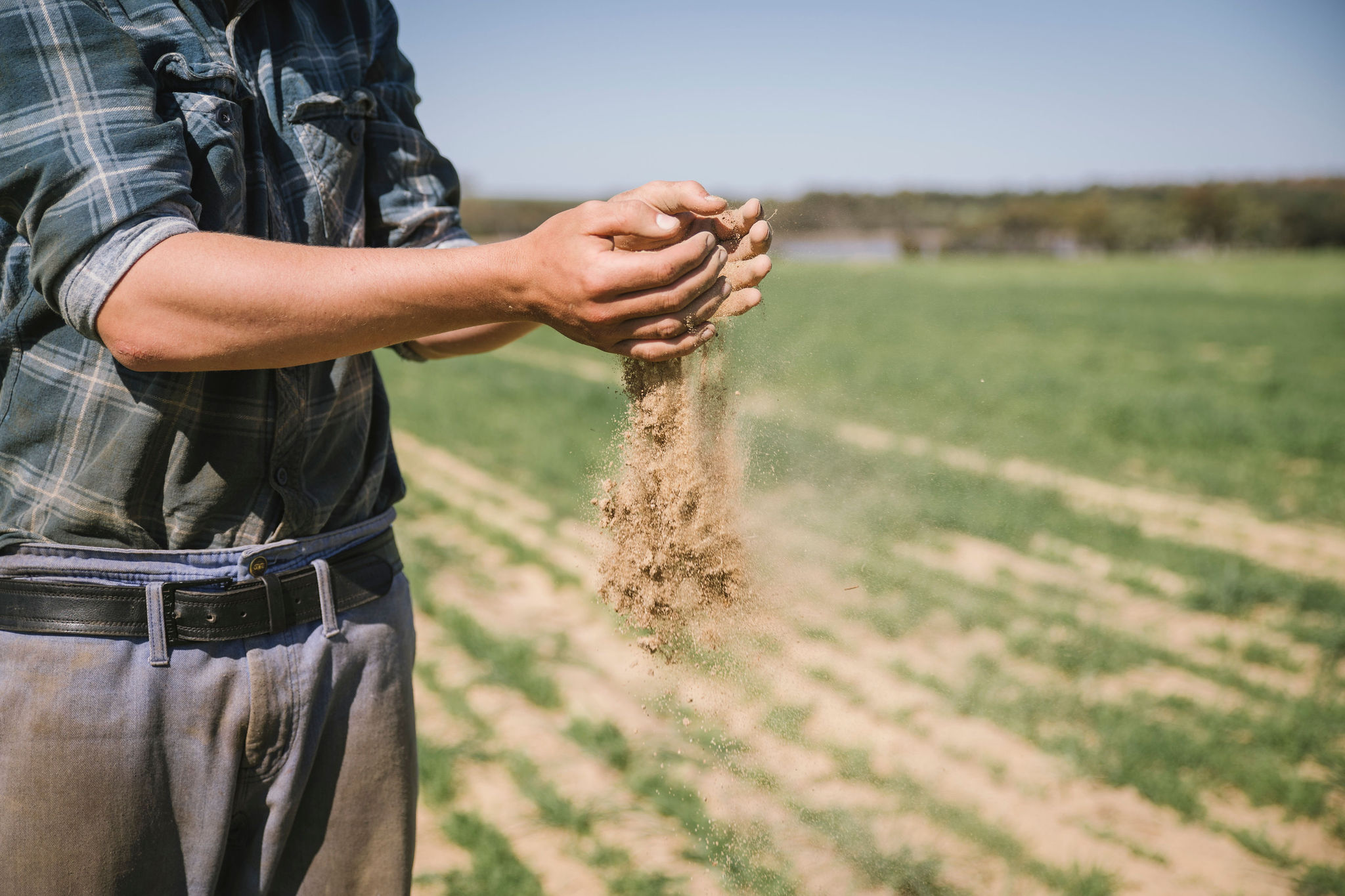
Sandy soils
Key limitations in sandy soils are compacted layers, water repellence and poor fertility. Deep tillage measures such as ripping and spading can break up compacted layers, improving aeration, drainage and root penetration. Ripping can break hardpans in soil with less topsoil disturbance. If treating water repellence, spading (soil mixing), delving (brings heavier subsoil up through the profile) and mouldboard ploughing (inverts the soil, burying repellent topsoil) are longer-term fixes.
Clay spreading and incorporation on sandy soils can ameliorate water repellence. Adding clay to sandy soils increases the soil’s capacity to store water and nutrients. However, adding clay to the soil can increase the amount of water required to wet up the soil beyond a crop’s wilting point and provide plant available moisture so moisture stresses can occur earlier in drier years.
Undertake a soil test before adding clay to check the quality and to ensure that nutrient deficiencies and/or toxicities are not induced or are catered for. Care needs to be taken to ensure practices are suitable and timing correct to avoid exposure of the soil to erosion. Limitations need to be correctly diagnosed and then corrective practices examined with a cost-benefit approach.
Building organic matter
Greater plant biomass above and below ground provides more organic material to stimulate microbial activity, thereby accelerating nutrient cycling. Ameliorating soil constraints such as compaction, water repellence and acidity, and using appropriate fertiliser types and rates, help to maximise plant growth. Growing a diversity of plants, with different root structures, growing season lengths and associated microbial activity, can add organic matter to more of the soil. This diversity provides resilience and flexibility and helps to better adapt to seasonal variability. The growth of more biomass above ground provides more vegetative cover over the soil surface, protecting soils from erosion, increasing water infiltration into the soil and reducing evaporation. Below ground, roots help bind soil particles into aggregates that allow better circulation of water and air and make soil particles more resistant to erosion.
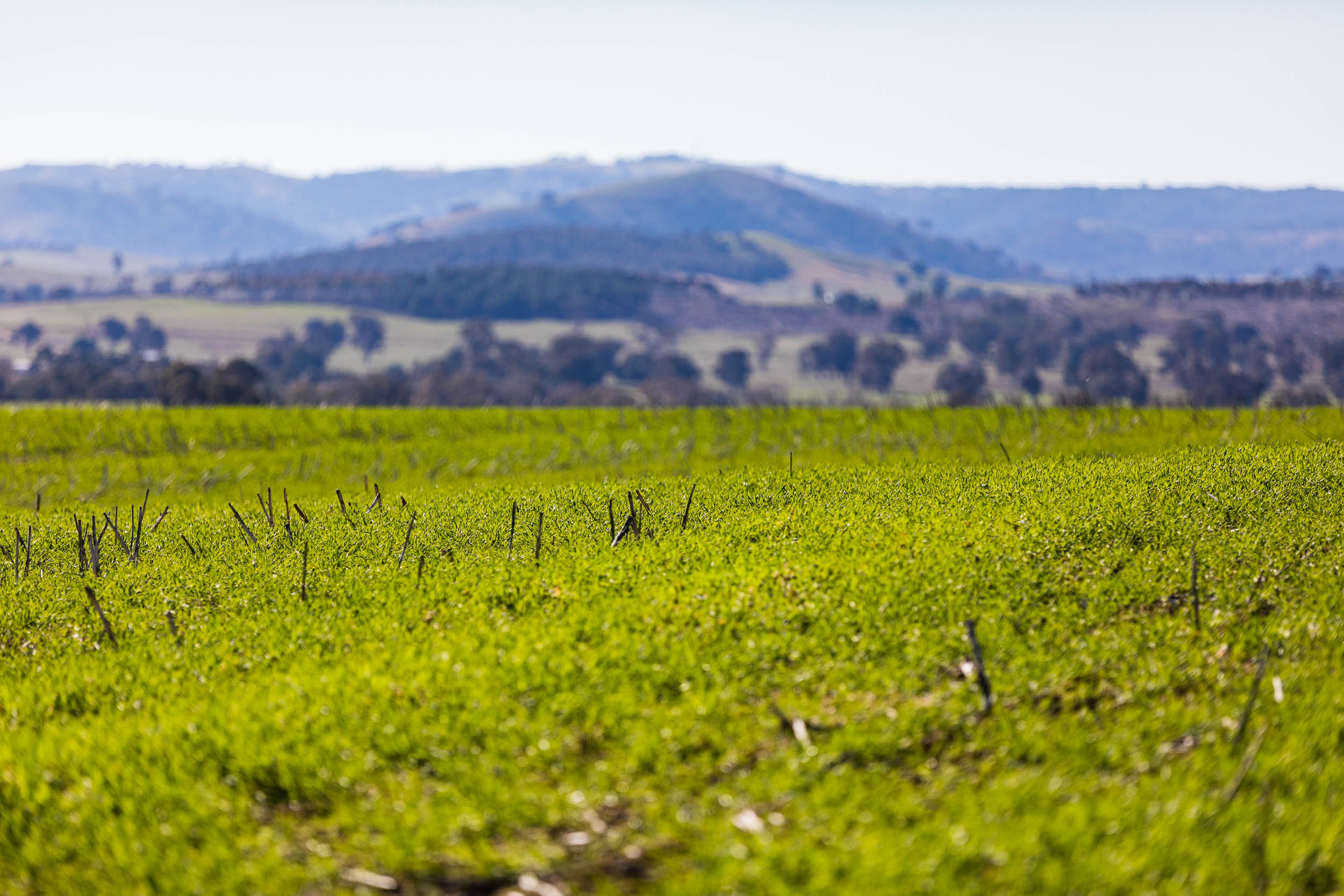
Managing acidity
Keeping soil pH in a range desirable for most plant growth (pH (water) 6-8; pH (CaCl2) 5.5-7.5) is important to maintain in agricultural production. Soils tend to acidify more quickly in very productive pasture systems and where a significant amount of alkaline elements are removed in hay. A liming program based on regular pH testing will manage acidification. If subsoil acidity is the issue, lime must be incorporated, as it can take many years to leach into the soil of its own accord.
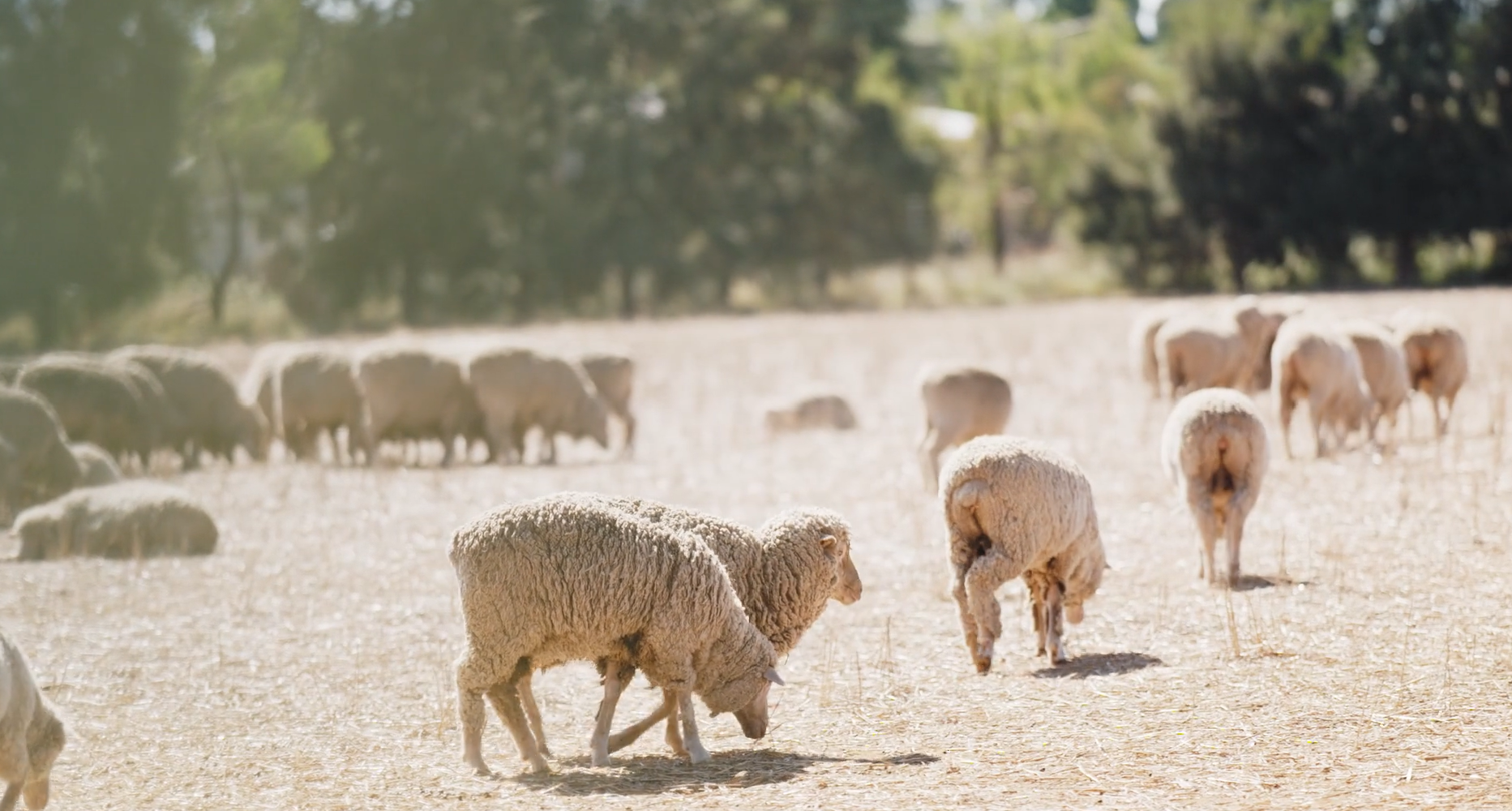
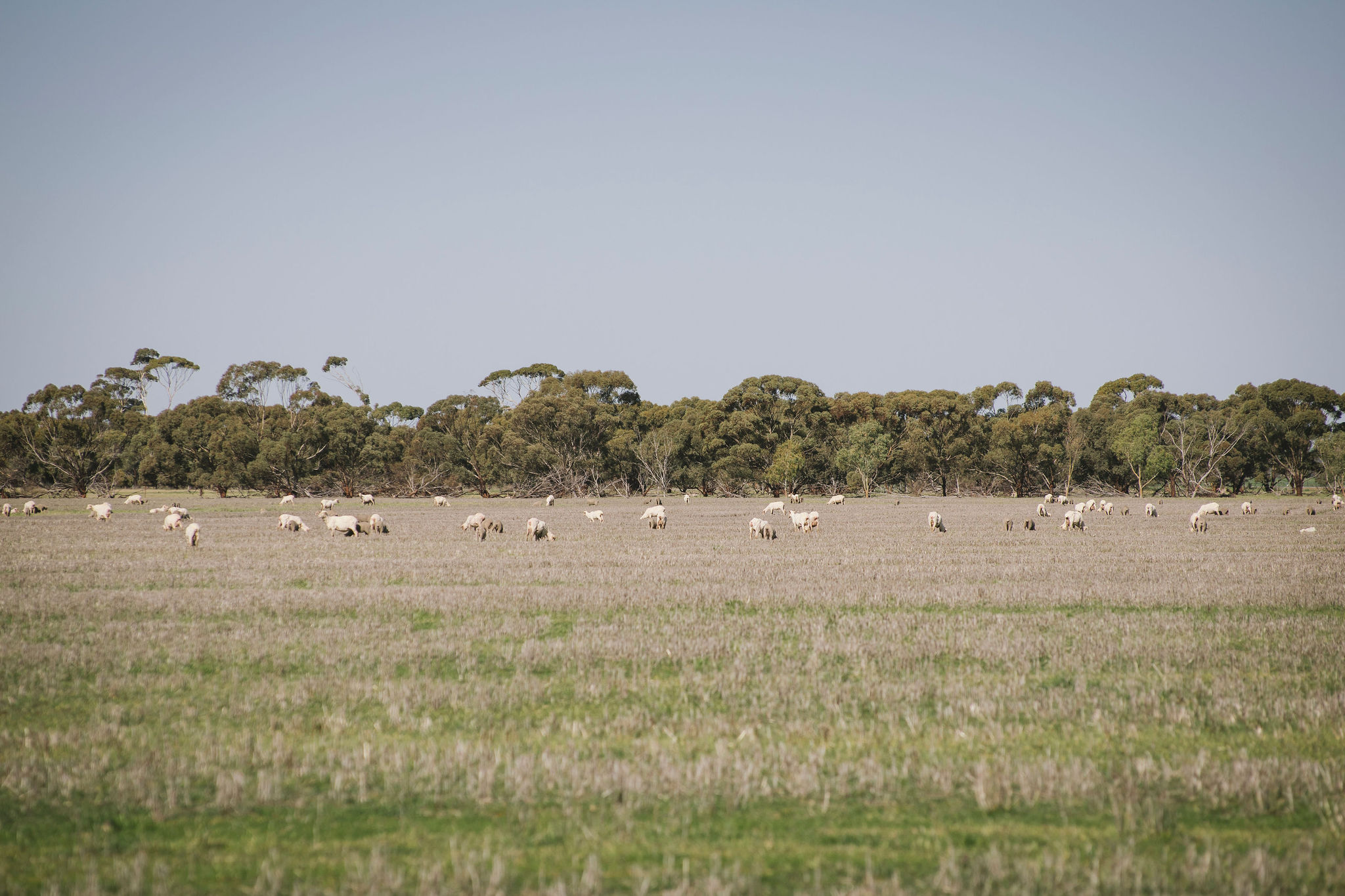
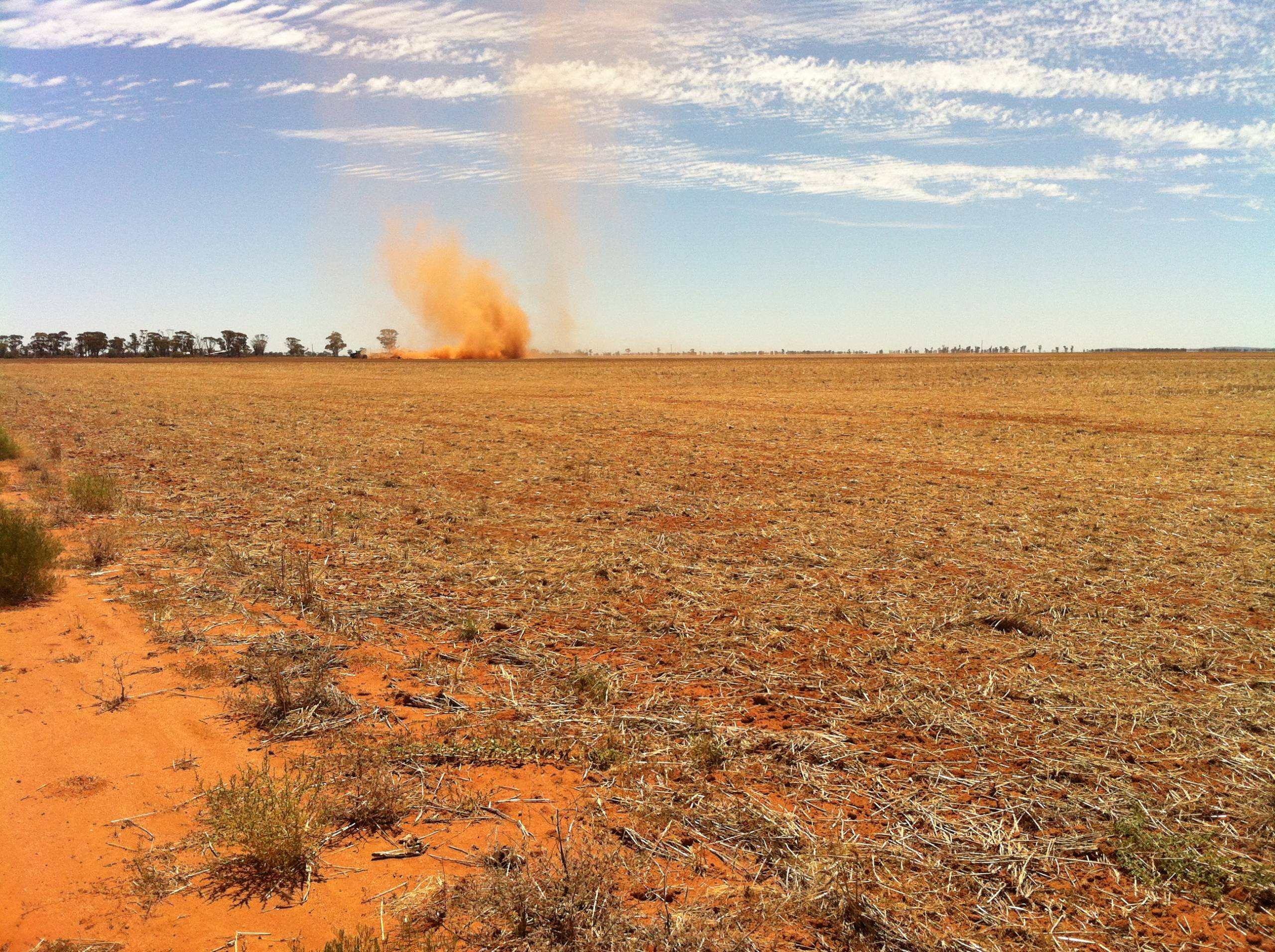
Controlling wind erosion
Key factors in protecting soils from wind erosion are deflecting wind flows away from the soil surface and maintaining soil aggregates so that individual particles cannot be easily dislodged. Barriers placed in the wind’s path will deflect it upwards away from the soil surface. The greater the height of the barrier, the greater the deflection. On cropping soils, barriers can be clay clods but are most commonly plants or plant residues such as crop stubble. The barriers themselves must be well anchored to ensure they are not blown away by wind. Plant roots, organic matter and clay can help bind soil particles together, making them too heavy to be transported.
Preventing water erosion on sloping land when the drought breaks
Key factors in protecting soils from wind erosion are deflecting wind flows away from the soil surface and maintaining soil aggregates so that individual particles cannot be easily dislodged. Barriers placed in the wind’s path will deflect it upwards away from the soil surface. The greater the height of the barrier, the greater the deflection. On cropping soils, barriers can be clay clods but are most commonly plants or plant residues such as crop stubble. The barriers themselves must be well anchored to ensure they are not blown away by wind. Plant roots, organic matter and clay can help bind soil particles together, making them too heavy to be transported.

Project Team and Fact Sheet Authors
- Mary-Anne Young (PIRSA)
- Dave Davenport (Soil Consultant)
- Vinod Phogat (PIRSA)
- Brian Hughes (PIRSA)
- Tim Pitt (PIRSA)
- Nigel Wilhelm (PIRSA)
- Paul Petrie (PIRSA)
- Rebecca Mitchell (Agriculture Victoria)
- Melissa Cann (Agriculture Victoria)
Posted Jun 7, 2022

